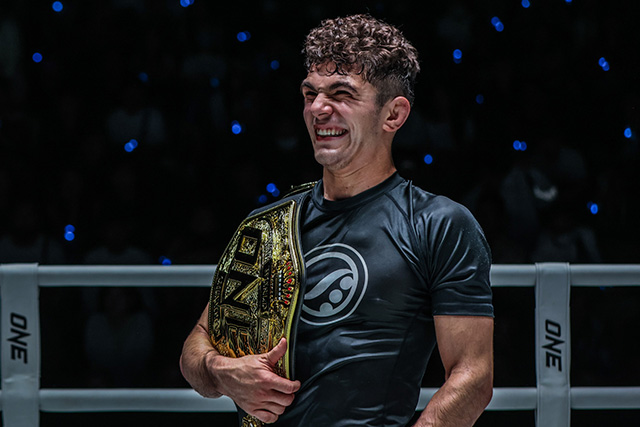The Bottom Line: Unfortunate Consequences
Editor’s note: The views and opinions expressed below are those of the author and do not necessarily reflect the views of Sherdog.com, its affiliates and sponsors or its parent company, Evolve Media.
The New Year for most is a time for celebration and looking forward to the future. For longer-term mixed martial arts fans, unfortunately, it has become a time for looking back to the past and having nostalgia for when New Year’s MMA was so much more exciting.
Advertisement
Casual Japanese audiences could partake in bizarre freakshow fights, such as the gargantuan Bob Sapp against sumo champion Akebono. Knowledgeable MMA fans got to see high stakes bouts between the best of the best like Fedor Emelianenko-Antonio Rodrigo Nogueira or Wanderlei Silva-Ricardo Arona. It was an MMA blowout, with Japanese MMA fans able to watch on major networks while fans from other parts of the world eagerly awaited just to read what had happened and hopefully watch later.
New Year’s Eve MMA remains fun today, but it’s obviously only a
shell of its former self.
Rizin Fighting Federation’s card this year featured Nobuhiko
Takada, the old Pride music, top-notch production and a lively
crowd, but it did not feature anything resembling the caliber of
fighters nor the star power from the past. The results of the
Bellator
MMA vs. Rizin series illustrated the shift of power in the MMA
landscape, as Bellator won all five fights. Rizin does its best but
doesn’t have access to the best MMA fighters, and the biggest New
Year’s Eve fights in recent years have been boxing or kickboxing
rather than MMA.
What gets discussed less in the context of the fall of New Year’s MMA because it’s more recent is the death, or at least hibernation, of major Ultimate Fighting Championship New Year events. The weekend closest to New Year’s used to be one of the biggest events on the UFC calendar, too. The UFC would look to put on some of its most compelling fights of the year at that time, and some of its most successful pay-per-view blowouts came at the end of one year or the very beginning of another.
The trend started in 2006, arguably the most important year in UFC history, as the popularity and revenue of the company exploded. It was fitting that at the end of a year when the company set a new pay-per-view record four different times, it closed with a fight that felt like the culmination of the year’s events, with Chuck Liddell and Tito Ortiz colliding in a grudge match between the company’s two top stars. The Dec. 30 date helped to enhance interest, as friends got together for parties to check out the new hot spot, and the UFC would make running Las Vegas at the end or beginning of the year a tradition for the next decade.
In 2007, Liddell and Silva finally squared off in the dream match UFC President Dana White had been trying to put together for years, and they delivered an electric fight despite having struggled in recent appearances. The next year was the most successful UFC event ever that lacked an upper-echelon prestige main event, as a Rashad Evans-Forrest Griffin/Frank Mir-Antonio Rodrigo Nogueira/Silva-Quinton Jackson tripleheader was a box-office bonanza.
From there, New Year’s shows would be a UFC institution. The first Jon Jones-Daniel Cormier fight took place there in 2015. Ronda Rousey and Brock Lesnar would have their farewells before heading off to WWE. The crucial Chris Weidman-Anderson Silva rematch took place at the end of the year in 2013. It seemed hard to imagine the UFC ever giving up the tradition given how successful it was. Then ESPN came along.
The ESPN deal has been a big positive overall for UFC. It has brought the company record revenues. The added promotional push helps the big events. The UFC has propped up the ESPN+ service and become a valuable part of ESPN’s portfolio. Yet ESPN’s power allows it to dictate certain items to UFC. For instance, there has been a lot of anger over UFC pay-per-view prices going up and up and up. That’s an ESPN call, because the short-term upside (more money) goes entirely to ESPN while the long-term downside (fan frustration at the UFC and slow declines in the pay-per-view base) is the UFC’s problem.
ESPN doesn’t like the New Year’s shows given the competing priorities on its calendar, so when ESPN and the UFC started their deal in 2019, that was the end of the New Year tradition, as well as the other holiday weekend events that were the backbone of the UFC schedule. It’s an unfortunate consequence of a generally positive arrangement. For fans, it takes away a fun annual tradition after the decline of the tradition abroad. More fights will return soon enough, but a mid- to late-January pay-per-view doesn’t have the same cache and it seems unlikely it ever will.
« Previous UFC President Dana White Slaps Wife During Altercation on New Year’s Eve
Next 5 Things You Might Not Know About Michal Oleksiejczuk »
More




 UFC News & Features
UFC News & Features